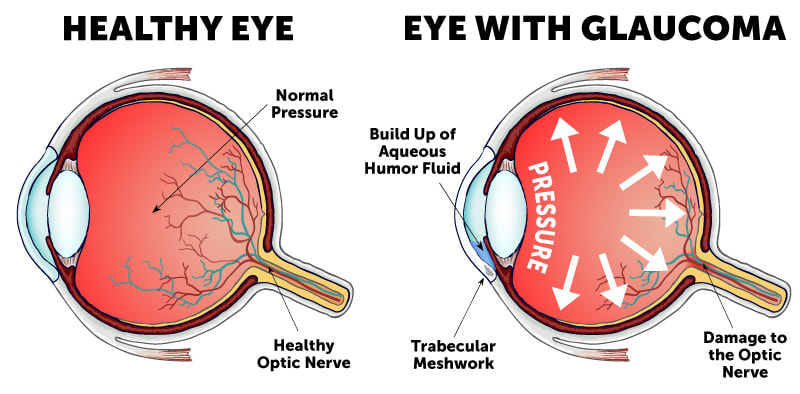Sophisticated Refractive Surgeries in AL: Change Your Vision Today
Sophisticated Refractive Surgeries in AL: Change Your Vision Today
Blog Article
Understanding the Various Vision Adjustment Procedures Available for Clearer View
In the realm of vision improvement procedures, a wide variety of options exist to address refractive errors and supply individuals with more clear sight. From the widely identified LASIK surgical procedure to less intrusive treatments like PRK and implantable lenses, the area of ophthalmology offers an array of techniques tailored to match different requirements and preferences. Each procedure features its own set of factors to consider, advantages, and prospective threats. Understanding the nuances of these vision modification approaches is essential for making notified decisions concerning one's aesthetic wellness. Let's check out the complexities of these treatments and clarified the path to accomplishing improved vision quality.
LASIK Surgical Procedure
LASIK surgical procedure is a common refractive procedure utilized to remedy vision problems such as astigmatism, nearsightedness, and farsightedness. This medical strategy, which stands for Laser-Assisted in Situ Keratomileusis, aims to improve the cornea to enhance exactly how light is focused on the retina, eventually enhancing vision clarity.
Among the main benefits of LASIK surgery is the fast enhancement in vision experienced by individuals. Numerous individuals see a substantial enhancement in their sight quickly after the procedure. Furthermore, a lot of patients report marginal discomfort and pain throughout the surgery and recovery period. The recovery time for LASIK is relatively quick, with lots of individuals returning to their daily activities within a day or 2 post-operation. On the whole, LASIK surgical treatment is a popular option for individuals looking for a long-lasting remedy for their vision issues.
PRK Procedure
While additionally a common refractive treatment, the PRK (Photorefractive Keratectomy) method differs from LASIK surgical treatment in its approach to correcting vision troubles. In PRK, rather than producing a flap on the cornea, the outer layer of the cornea, called the epithelium, is entirely eliminated. This enables the laser to improve the cornea to deal with refractive errors such as farsightedness, astigmatism, and nearsightedness straight externally.

Despite the longer recovery time, PRK can yield outstanding lead to vision enhancement, making it a beneficial option for those that might not appropriate prospects for LASIK surgery.
Implantable Lenses
As opposed to PRK where the cornea is reshaped straight, implantable lenses provide another technique for correcting vision by inserting artificial lenses inside the eye. This treatment is especially helpful for people with high levels of farsightedness, nearsightedness, or astigmatism that might not appropriate prospects for laser surgical procedures like LASIK or PRK.
Implantable lenses, likewise called phakic intraocular lenses, job by supplementing the eye's all-natural lens with a synthetic one. refractive surgeries in al. These lenses can be put in front of the all-natural lens (former chamber) or behind the iris and before the all-natural lens (posterior chamber) By changing the power and positioning of these lenses, ophthalmologists can successfully fix refractive errors and improve visual acuity
One advantage of implantable lenses is that they are exchangeable and removable, supplying flexibility for future modifications. As with any surgical treatment, there are threats involved, such as infection or cataract development. Patients taking into consideration implantable lenses ought to talk to an eye care expert to identify one of the most appropriate alternative based on their individual demands and eye wellness.
Corneal Rings
Corneal rings, additionally understood as intracorneal ring sectors, are small, clear devices put into the cornea to fix vision distortions such as keratoconus. Keratoconus is a condition where the cornea thins and bulges outward, causing vision to come to be distorted. The insertion of corneal rings assists to flatten the cornea, boosting aesthetic skill and decreasing the uneven astigmatism triggered by keratoconus.
The treatment for putting corneal rings is minimally invasive and reasonably fast, frequently done as an outpatient treatment. During the surgical treatment, the eye doctor makes a little laceration in the cornea and inserts the rings at a particular depth. Once in position, the rings aid to reshape the cornea, offering a smoother surface area for light to get in the eye, which can lead to more clear vision.
Corneal rings are considered a reversible treatment, as they can be eliminated or replaced if necessary. retina service near me. While they may not completely get rid of the demand for glasses or get in touch with lenses, corneal rings can dramatically improve vision top quality and overall aesthetic comfort for individuals with keratoconus or various other corneal abnormalities
Refractive Lens Exchange
Following the adjustment of corneal abnormalities with procedures like corneal rings, an additional vision adjustment technique that can deal with refractive mistakes is Refractive Lens Exchange (RLE) RLE is a surgery that includes changing the eye's natural lens with an artificial intraocular lens (IOL) to correct refractive errors such as Full Report nearsightedness, presbyopia, and farsightedness. This procedure is especially useful for individuals who might not be suitable candidates for procedures like LASIK or PRK due to elements such as thin corneas or high refractive errors.

Final Thought
In conclusion, there are numerous vision modification procedures offered to aid people accomplish more clear view. LASIK surgical procedure, PRK treatment, implantable lenses, corneal rings, and refractive lens exchange are all choices that can attend to various vision concerns.
In the realm of vision improvement procedures, a plethora of explanation choices exist to resolve refractive mistakes and offer people with more clear sight.LASIK surgical procedure is a typical refractive procedure used to fix vision problems such as farsightedness, nearsightedness, and astigmatism.While likewise a common refractive procedure, the PRK (Photorefractive Keratectomy) method differs from LASIK surgical treatment in its technique to remedying vision troubles.Adhering to the correction of corneal irregularities with treatments like corneal rings, another vision adjustment technique that can address refractive errors is Refractive Lens Exchange (RLE) LASIK surgical procedure, PRK treatment, implantable lenses, corneal rings, look at this website and refractive lens exchange are all options that can attend to different vision concerns.
Report this page